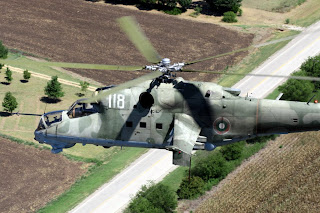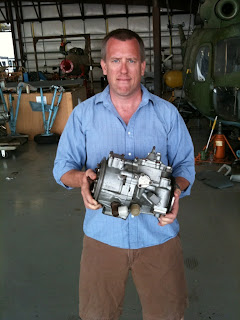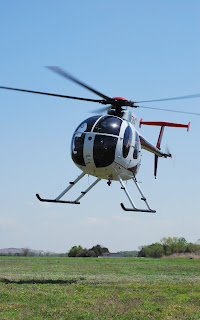Brad gets a turn as "PIC" on this run to the ramp with the MiG-21. Contrary to appearances, the pitot tube is not really going through his head, although it might have tried if he had come to a sudden stop.
The Commemorative Air Force and Cold War Air Museum both brought aircraft out to the ramp for visitors to see.
Once the static displays were was set up, the wait for visitors began. The goal today was to bring pilots and planes to the airport. Gusty winds and an overcast delayed the start of events and kept some away, but everyone had fun and a larger crowd is expected next year.
Arriving aircraft parked across from the static displays.
The "Race" did not put aircraft in close proximity to each other. A timed event, each plane flew against the clock with different categories based on speed. This year, there were no jet or helicopter entries (maybe next year).
These events are a popular way to promote flight activity and interest in general aviation. With well prepared documentation and a good pre flight brief, no one was in any doubt about where they were going or that safety (as always) was paramount.
The briefing material included aerial views and GPS coordinates of the overfly points along the route.
At the finish line, a crew stood ready to record the exact time an aircraft passed over the checkered flag. Jon turned on some smoke as he approached to be sure he would be seen.
The bright red and white CJ likes to be flown and is popular at events.
After each flight the airport crew would compare notes (at least that's what we think they're talking about).
Although this event was targeted at planes and pilots, a small crowd drove to the airport as well. Everyone visited the displays and most walked over to the Museums to look inside. This was good practice for the upcoming June 25th event, when a crowd of several thousand is expected.
The restaurant was filled and a live band provided music.
The band, appropriately named Vinny and the Jets, took a break to pose with the MiG. Playing mostly oldies, 60's and 70's hits, the music fit right in with the cold war aircraft.
After an event, everything gets put up again. This time it's Johnny's turn to drive the MiG. He managed to stay ahead of the aircraft all the way back. Good job Johnny!
And with a great big Texas thanks to everyone that came out today for their help, we'll be doing this again in June, but with more aircraft and people!











































